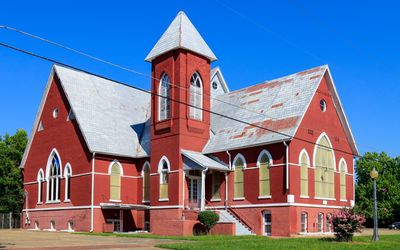
The First Baptist Church, Selma, along the Selma to Montgomery NHT |
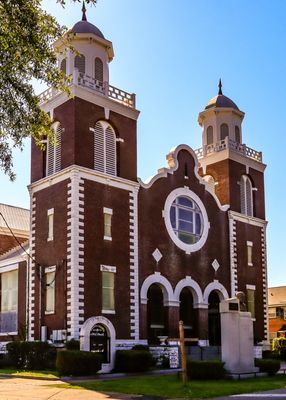
Brown Chapel African Methodist Episcopal (AME) Church, Selma, along the Selma to Montgomery NHT |
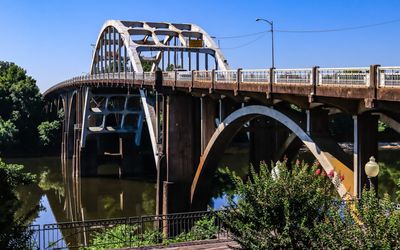
The Edmund Pettus Bridge over the Alabama River along the Selma to Montgomery NHT |
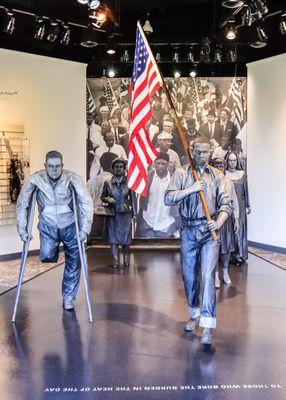
Statue of marchers in the Lowndes Interpretive Center, site of tent city, along the Selma to Montgomery NHT |
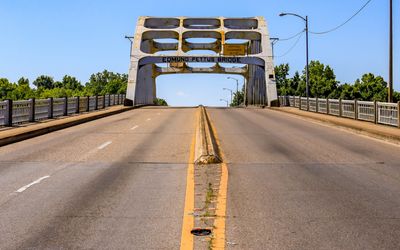
View of the Edmund Pettus Bridge from Selma looking south along the Selma to Montgomery NHT |
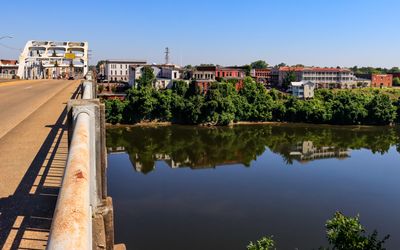
The Edmund Pettus Bridge and Selma on the banks of the Alabama River along the Selma to Montgomery NHT |
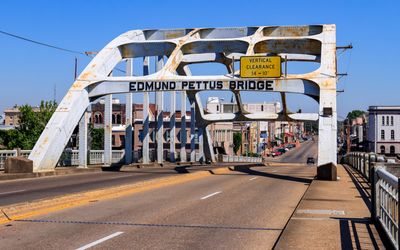
View north into Selma through the Edmund Pettus Bridge along the Selma to Montgomery NHT |
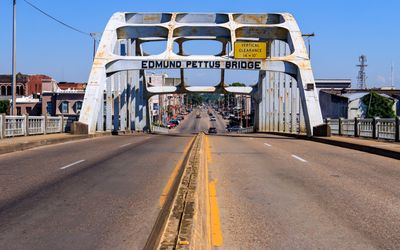
Road into Selma through the Edmund Pettus Bridge along the Selma to Montgomery NHT |

Selma welcome sign on the south bank of the Alabama River along the Selma to Montgomery NHT |
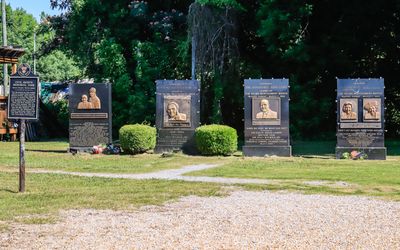
The Memorial Park on the south side of the Edmund Pettus Bridge along the Selma to Montgomery NHT |
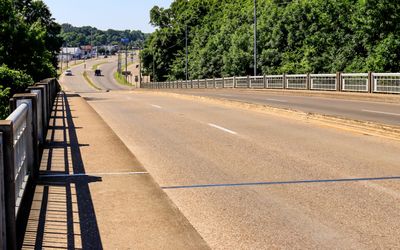
View south on US 80, site of the “Bloody Sunday” confrontation on March 7, 1965, along the Selma to Montgomery NHT |
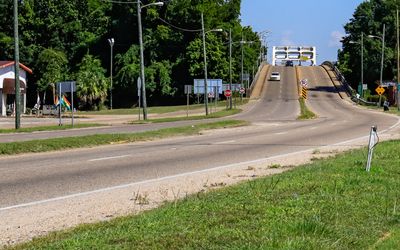
Site of “Bloody Sunday” on March 7, 1965, looking north toward the Edmund Pettus Bridge, along the Selma to Montgomery NHT |

The Edmund Pettus Bridge viewed from the March 7, 1965 site of “Bloody Sunday”, along the Selma to Montgomery NHT |
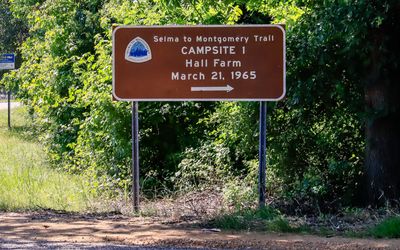
Hall Farm, Campsite 1, along the Selma to Montgomery NHT |
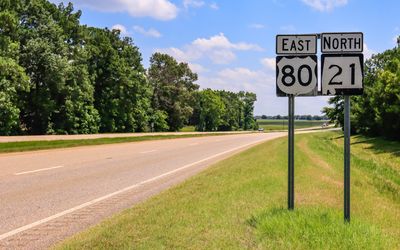
View along US 80 East, path of the 1965 Selma to Montgomery Voting Rights March, along the Selma to Montgomery NHT |
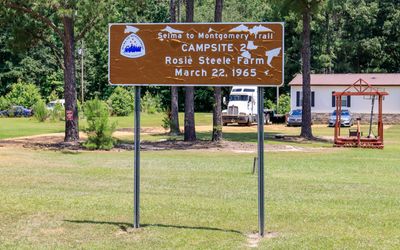
Rose Steele Farm, Campsite 2, along the Selma to Montgomery NHT |

Signs and a flag on the side of US 80 along the Selma to Montgomery NHT |
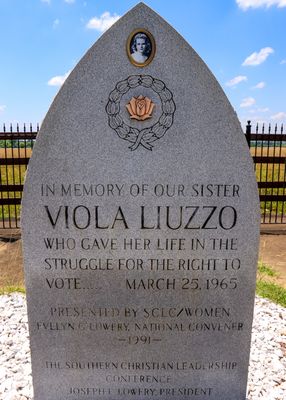
Monument to Viola Liuzzo, killed by the KKK for assisting marchers, along the Selma to Montgomery NHT |
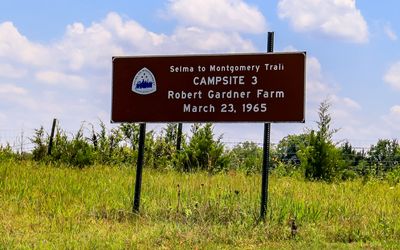
Robert Gardner Farm, Campsite 3, along the Selma to Montgomery NHT |
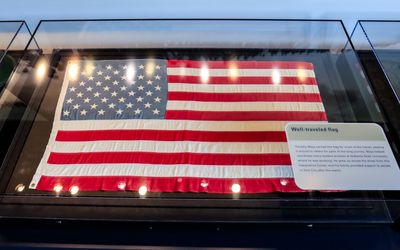
U.S. Flag carried by Timothy Mays during the Voting Rights March along the Selma to Montgomery NHT |
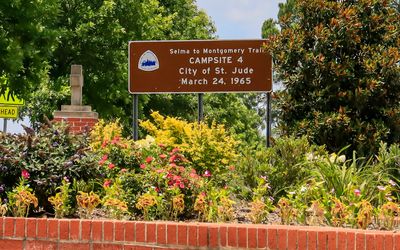
City of St. Jude, Campsite 4, along the Selma to Montgomery NHT |
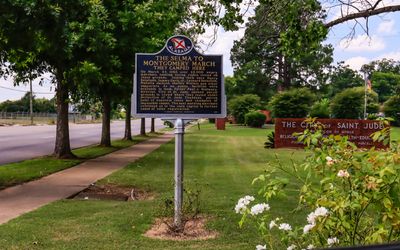
Alabama Monument marking the City of St. Jude campsite along the Selma to Montgomery NHT |
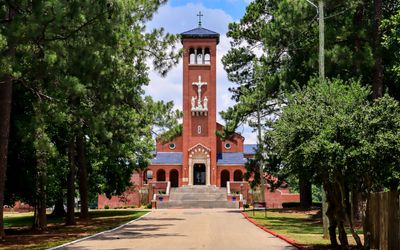
City of St. Jude Catholic Church along the Selma to Montgomery NHT |
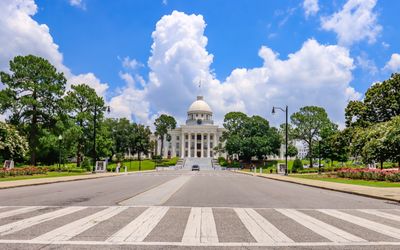
Alabama State Capitol, ending point of the Voting Rights March, along the Selma to Montgomery NHT |

Closeup of the Alabama State Capitol in Montgomery along the Selma to Montgomery NHT |











